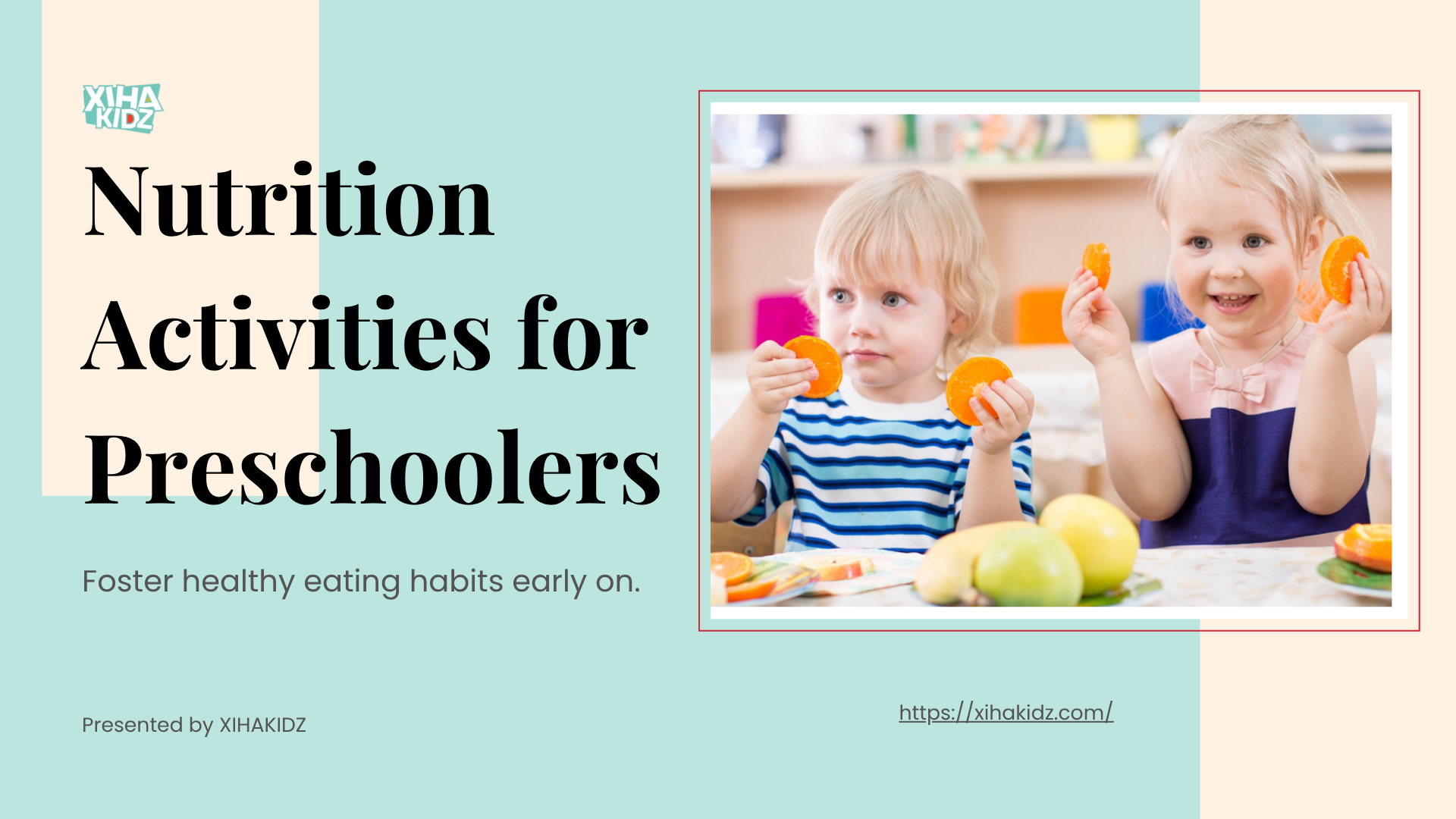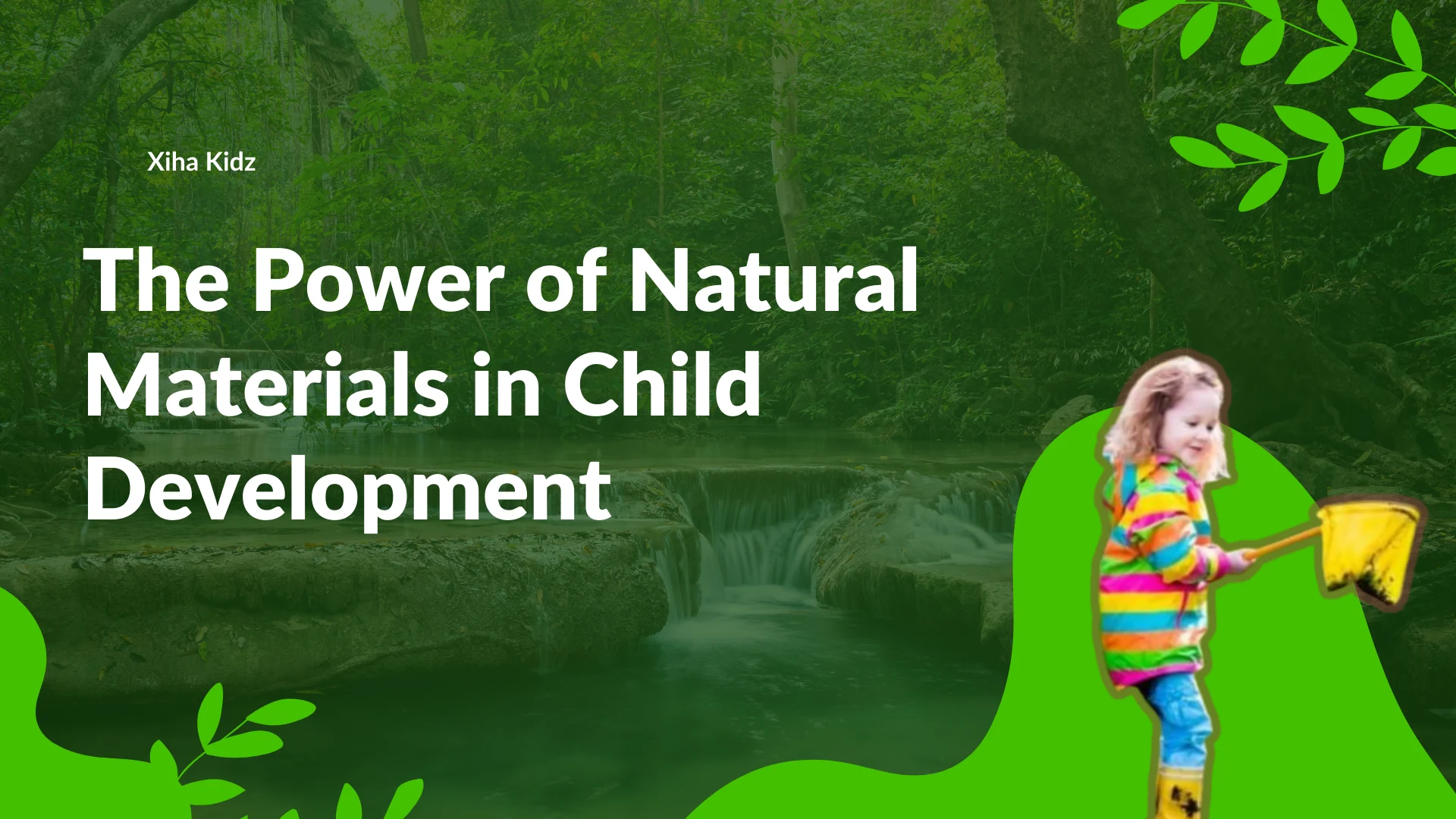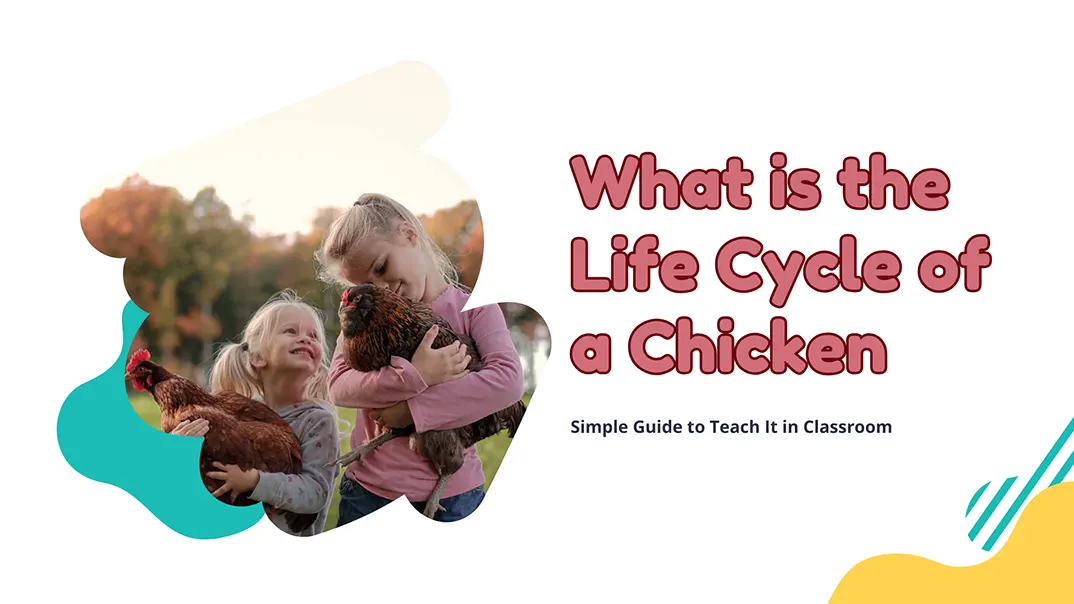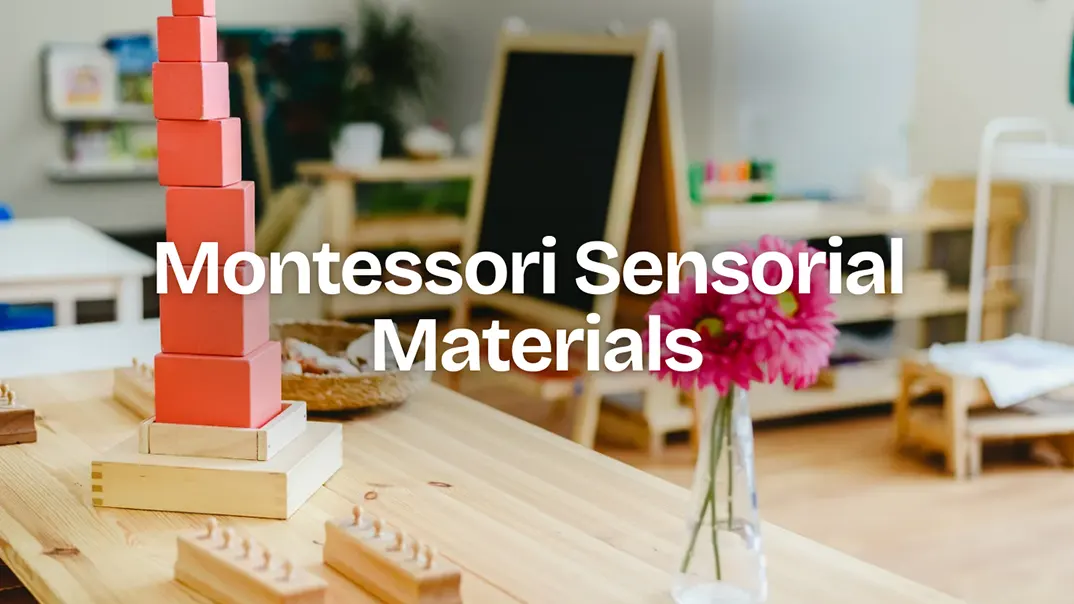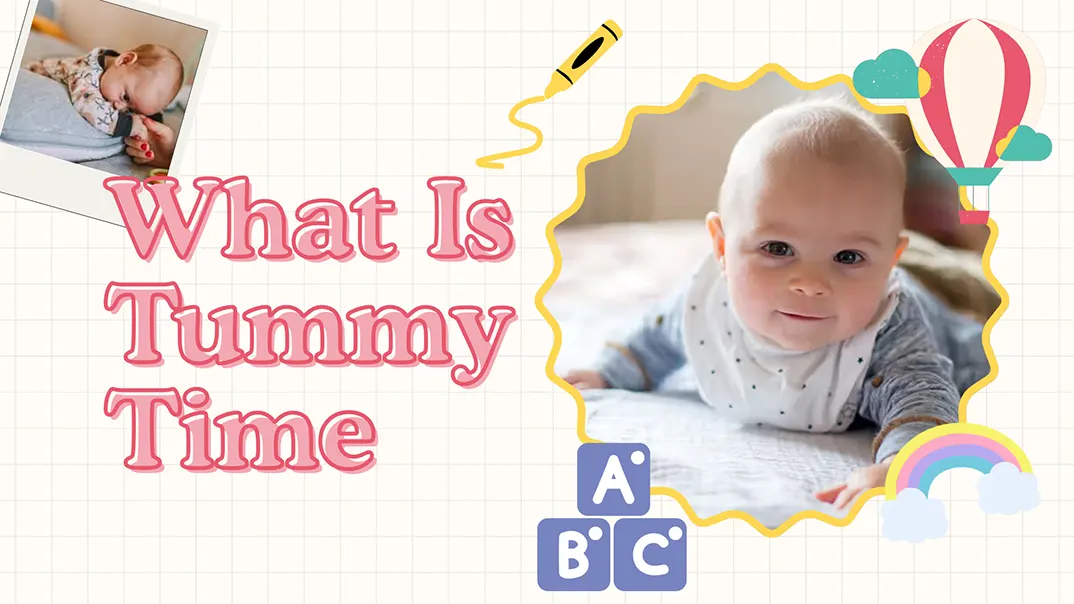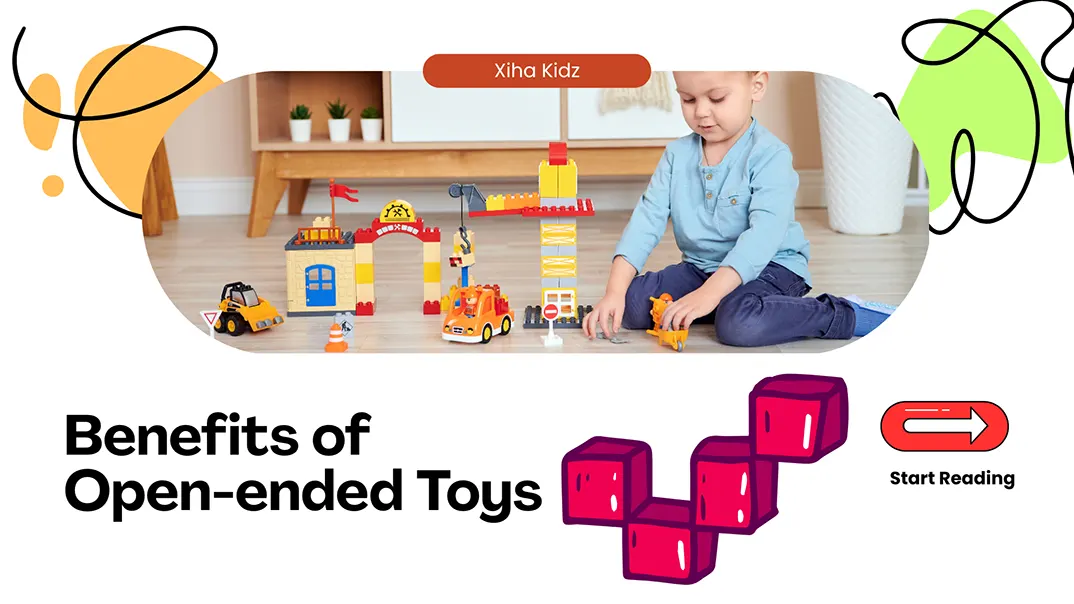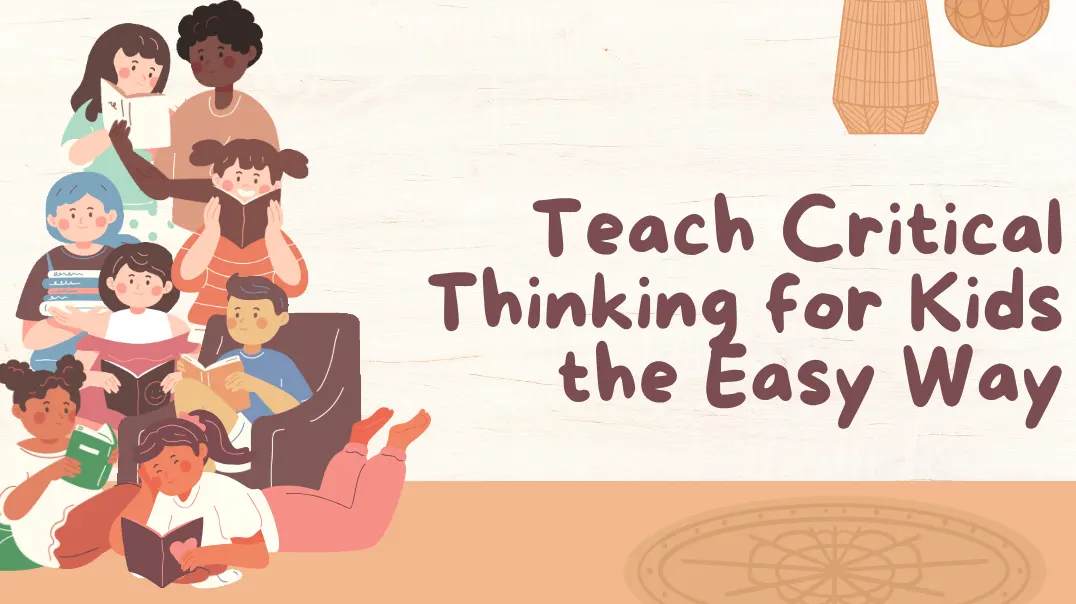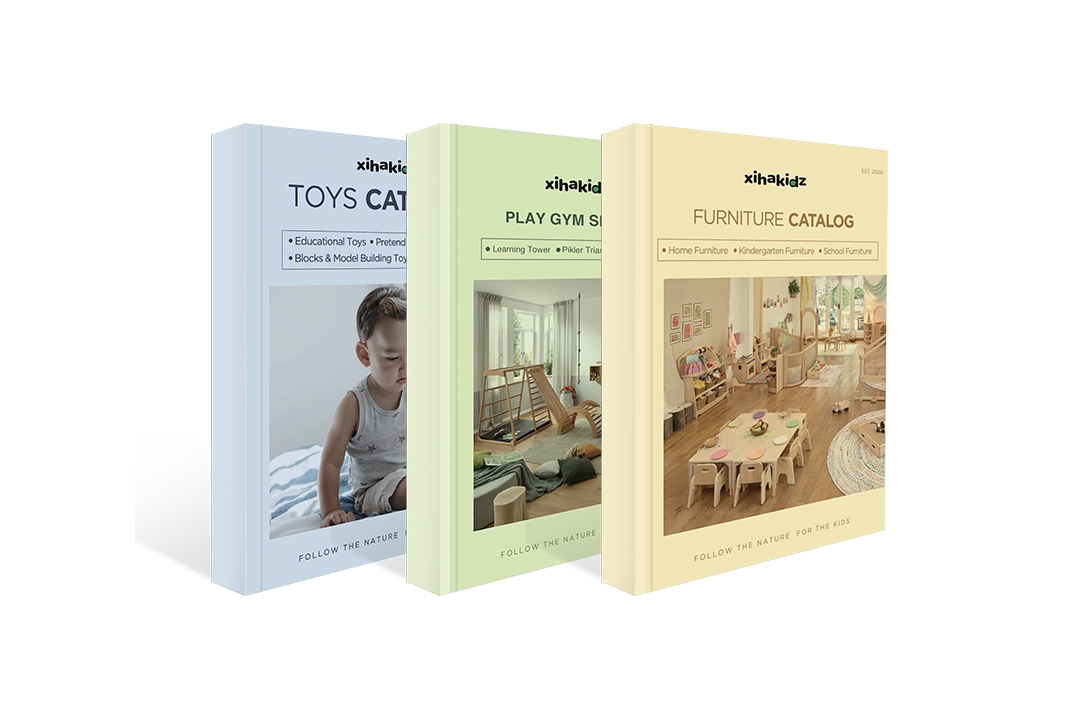How can we teach young children to eat healthy without turning it into a boring lesson? What makes fruits and vegetables exciting instead of something they avoid? Can picky eaters actually enjoy learning about food? And most importantly—what kind of Nutrition Activities for Preschoolers truly inspire curiosity, creativity, and healthy habits?
The answer lies in transforming nutrition into something playful and hands-on. Nutrition Activities for Preschoolers work best when they involve songs to sing, colorful foods to sort, stories to tell, and crafts to create. Worksheets don’t engage them. Long explanations go over their heads. But when nutrition becomes something they can touch, taste, build, and explore, preschoolers respond with joy. These activities help children build a real relationship with food—one filled with learning, laughter, and long-term healthy choices.
In this article, I’ll share 30 fun and effective Nutrition Activities for Preschoolers that blend creativity, learning, and healthy habits. Whether you’re planning a nutrition theme week or just looking to spice up your preschool curriculum, these activities will help you inspire healthy choices that last a lifetime.

Why Nutrition Activities for Preschoolers Matter?
In early childhood, habits are formed that can last a lifetime—including how children relate to food. That’s why Nutrition Activities for Preschoolers are more than just fun classroom fillers—they are tools that help shape positive behaviors, healthy attitudes, and an early understanding of well-being.
Preschoolers learn best through play, repetition, and hands-on interaction. When nutrition is taught through engaging formats—like songs, food art, sensory games, or pretend play—it becomes real and relevant to them. This is the goal of preschool nutrition activities: to connect the concept of healthy eating with everyday experiences, making nutritious choices both familiar and fun.
Nutrition Activities for Preschoolers Build Strong Foundations
During the preschool years, children are growing rapidly—physically, mentally, and emotionally. Nutrition Activities for Preschoolers help introduce the importance of healthy food choices in ways that young minds can grasp. Through interactive play and discovery, children begin to associate nutritious food with energy, strength, and happiness.
Nutrition Activities for Preschoolers Supports Muscle Growth and Development
Preschoolers are in a crucial stage of physical development. Proteins, vitamins, and minerals help build muscles that support movement, posture, and coordination. Through nutrition science activities for preschoolers, children can learn which foods contain these nutrients and how they help their bodies grow.
Nutrition Activities for Preschoolers Fosters Weight Management
Childhood obesity is an increasing concern globally. Teaching balanced eating early on through fun and accessible activities helps children build awareness around portion sizes and healthy food choices. Food and nutrition activities for preschoolers that emphasize colorful fruits and vegetables can lead to better dietary patterns as children grow.
Nutrition Activities for Preschoolers Strengthens Bones
Calcium and vitamin D are essential nutrients for building strong bones. Using themed nutrition activities for preschool, educators can introduce foods like milk, cheese, tofu, and leafy greens that promote bone health.
Nutrition Activities for Preschoolers Aids Brain Development
Nutrition impacts cognitive development just as much as physical health. Nutrients like omega-3 fatty acids, iron, and complex carbohydrates help the brain function effectively. That’s why nutrition ideas for preschoolers should include foods that support focus, memory, and emotional regulation.
Découvrez notre gamme complète de produits
Accédez à notre catalogue complet comprenant des meubles et des équipements de jeu de qualité supérieure pour les jardins d'enfants et les écoles.
How to Explain Nutrition to a Child
Start With What They Know
Preschoolers are concrete thinkers. They learn best when we connect new concepts to familiar objects or feelings. So instead of jumping into terms like “nutrients” or “vitamins,” start by linking food to how it makes them feel. For example: “Healthy food gives you energy to play,” or “Vegetables help you grow strong like a superhero.” These simple statements open the door to deeper conversations.
That’s where Nutrition Activities for Preschoolers come in. A game like “Food Sorting” or “What’s on My Plate?” uses pictures and real food models to help kids classify what’s healthy. These activities offer natural opportunities to talk about food benefits without lecturing. It’s learning through doing.
Use Visuals, Colors, and Stories
Bright visuals, silly stories, and exaggerated characters can all help make nutrition memorable. One effective method is to introduce a nutrition theme preschool storybook character—like “Captain Carrot” or “Broccoli Boy”—who gets strong, smart, or fast by eating different foods. Children begin to associate these foods with positive traits.
Another great tool is healthy food art activities for preschoolers, where kids create colorful meals using play food or magazine cutouts. While they craft, you can gently explain that every color in a fruit or vegetable helps a different part of their body. Red helps the heart, orange helps the eyes, green builds bones, and so on.

Turn Information Into Exploration
Rather than telling children what to eat, let them discover it. A small nutrition science activity for preschoolers—like observing how apples turn brown or how seeds sprout—helps them connect food to nature and biology. These activities build curiosity and set the stage for understanding where food comes from.
You can also organize nutrition cooking activities for preschoolers, like spreading hummus on crackers or assembling fruit kabobs. While doing this, ask: “What color is this food?” “Where do you think it grows?” or “What does it help in your body?” These open-ended questions let kids take the lead in learning.
Keep It Positive and Empowering
Avoid labeling foods as “bad” or “junk.” Instead, explain that some foods help us grow stronger, while others are okay “sometimes” but not every day. Use nutrition crafts for preschoolers or charts to let children track their own healthy choices. Give praise for trying new things, not just finishing what’s on their plate.
When nutrition is framed positively, children feel empowered rather than restricted. That’s the true value of great nutrition activities for preschoolers—they encourage healthy habits without shame, stress, or pressure.

Interactive Games that Teach Nutrition Concepts
Interactive games are one of the most effective ways to introduce nutrition to young learners. They promote movement, reinforce vocabulary, and provide social learning moments. The following nutrition activities for preschoolers use playful learning to explore food groups, healthy habits, and the importance of nutritious choices.
Nutrition Activities for Preschoolers 1: “Food Group Hopscotch”
Get kids moving while teaching food group classification with this action-packed floor game.
Matériels:
- Large floor space
- Printable food images (from different food groups)
- Masking tape or chalk
- Labels for each food group (Fruits, Vegetables, Proteins, Grains, Dairy)
Instructions:
- Create a hopscotch path using masking tape or chalk on the floor.
- Place different food images inside each square.
- As children hop through the course, they must call out the name of each food and identify its food group.
- For extra fun, ask them to “hop like a rabbit” on fruits, “walk slowly” on dairy, etc.
Skills Developed:
- Gross motor coordination
- Food group recognition
- Vocabulary and memory retention
Nutrition Activities for Preschoolers 2: “Healthy or Not?” Sorting Relay

This high-energy relay game helps children quickly identify and sort healthy versus “sometimes” foods.
Matériels:
- Two baskets per team
- A mix of food image cards (healthy and “sometimes” foods)
- Labels: “Healthy Foods” and “Sometimes Foods”
Instructions:
- Divide kids into small teams.
- Place all food cards in a pile at one end of the room.
- On “go,” one child at a time runs, selects a card, and places it in the correct basket.
- Continue until all cards are sorted, then review them as a group.
Skills Developed:
- Decision-making
- Teamwork and collaboration
- Categorization of healthy eating choices
Nutrition Activities for Preschoolers 3: “Build a Balanced Meal”

Let preschoolers build their own meal while learning what makes a plate balanced and nutritious.
Matériels:
- Laminated food group mats (divided into sections: Fruits, Veggies, Protein, Grains, Dairy)
- Cut-out food images or play food items
- A timer (optional)
Instructions:
- Give each child or pair a blank “plate” mat.
- Set a timer and have them collect one food from each group to make a balanced meal.
- After time is up, discuss each child’s plate as a group.
Skills Developed:
- Understanding balanced nutrition
- Matching and sorting
- Fine motor and reasoning skills
Nutrition Activities for Preschoolers 4: “Food Bingo”

Turn nutrition vocabulary and listening skills into a lively, educational competition.
Matériels:
- Bingo cards with pictures of various foods
- Calling cards with matching food images
- Small markers or stickers
Instructions:
- Distribute food bingo cards to each child.
- Pull calling cards and describe the food: “This is a red fruit that grows on trees and helps your heart.”
- Kids mark their cards if they have that food.
- First to complete a row wins a healthy snack!
Skills Developed:
- Listening comprehension
- Visual recognition
- Nutrition vocabulary
Nutrition Activities for Preschoolers 5: “My Healthy Day” Role Play

This dramatic play activity allows kids to plan out daily meals using toy food and storytelling.
Matériels:
- Costume props (chef hat, shopping basket, apron)
- Toy food or cutouts
- Large poster with “Morning,” “Lunch,” “Dinner,” “Snack” columns
Instructions:
- Invite children to pretend they’re planning meals for a day.
- Have them pick foods and place them on the poster under the correct meal.
- As they explain their choices, guide the conversation toward balanced eating.
Skills Developed:
- Sequencing and daily routine awareness
- Speaking and presentation
- Applying nutrition knowledge to daily life
Preschool Nutrition Theme Circle Time Ideas
Circle time is the perfect opportunity to introduce nutrition concepts in a relaxed, group setting. It sets the tone for the day and allows children to absorb new ideas through songs, stories, visuals, and conversation. These nutrition activities for preschoolers are designed to build vocabulary, spark curiosity, and help preschoolers talk about food in fun and meaningful ways.
Nutrition Activities for Preschoolers 6: “What’s in My Lunchbox?”

Unpack real or pretend lunchboxes to explore food groups and everyday eating habits.
Matériels:
- Toy lunchbox or basket
- A variety of toy or real food items (fruit, sandwich, cookies, yogurt, vegetables, etc.)
- Chart with food groups
Instructions:
- One by one, take out food items from the lunchbox and show them to the class.
- Ask open-ended questions: “What is this?” “Who eats this at lunch?” “Is this a fruit or a vegetable?”
- Place each item on the food group chart and discuss its category.
Skills Developed:
- Food identification
- Categorization by food group
- Speaking and listening
Nutrition Activities for Preschoolers 7: “Color Me Healthy” Song & Game

This musical activity teaches children to associate food colors with health benefits through rhythm and visuals.
Matériels:
- A colorful chart with fruits and vegetables
- Song lyrics (original or adapted: “Red is an apple, green is a pear…”)
- Optional: real fruits/vegetables to hold up
Instructions:
- Sing a song about colorful healthy foods and their benefits.
- After each verse, show a real or toy food in that color.
- Let kids share if they’ve ever tried that food and what they think it helps with (e.g., eyes, heart, bones).
Skills Developed:
- Color recognition
- Memory recall
- Association between food and body health
Nutrition Activities for Preschoolers 8: “Food Group Puppet Show”

Bring food group characters to life using puppets and storytelling to teach balance and variety.
Matériels:
- Finger puppets or stick puppets representing different food groups
- Poster or visual of a balanced plate
Instructions:
- Introduce puppet characters from different food groups: Freddy Fruit, Daisy Dairy, Greta Grain, etc.
- Use the puppets to tell a short, simple story about what each food does for the body.
- Ask kids to help the puppets build a healthy plate by suggesting foods.
Skills Developed:
- Understanding food groups
- Story sequencing
- Group participation
Nutrition Activities for Preschoolers 9: “Food Feelings”

Encourage emotional awareness and food-body connection through discussion and facial expressions.
Matériels:
- Emotions chart
- Food cards or images
- A mirror or small hand-held mirrors (optional)
Instructions:
- Hold up a food image and ask, “How do you feel when you eat this?” (e.g., happy, sleepy, yucky, full)
- Let children show that feeling with facial expressions or choose from an emotions chart.
- Discuss why certain foods make us feel good and others might not.
Skills Developed:
- Emotional expression
- Food-body connection
- Early critical thinking
Nutrition Activities for Preschoolers 10: “MyPlate Circle Chat”

Introduce the MyPlate visual to explain the five food groups and let children participate by placing foods.
Matériels:
- A large visual of MyPlate (or your national food guide)
- Food pictures or toys
- Velcro or magnets
Instructions:
- Present the MyPlate image and explain the five food groups simply.
- Invite each child to pick a food and place it on the correct section of the plate.
- After placing the food, each child can share whether they like that food or have tried it before.
Skills Developed:
- Food group sorting
- Public speaking
- Visual learning
Cooking Classes for Little Chefs
Preschoolers love to help in the kitchen—and cooking with them is one of the most powerful ways to teach nutrition. Nutrition Activities for Preschoolers that involve food prep not only introduce healthy ingredients, but also build confidence, independence, and motor skills. With simple, no-heat recipes and guided support, every child can feel like a chef.
Nutrition Activities for Preschoolers 11: Rainbow Veggie Wraps

This activity turns vegetables into a colorful, hands-on snack that encourages picky eaters to explore.
Matériels:
- Whole wheat tortillas
- Pre-sliced colorful vegetables (carrots, cucumbers, bell peppers, spinach, red cabbage)
- Hummus or yogurt-based spread
- Butter knives or child-safe spreaders
- Napkins or plates
Instructions:
- Let children choose 3–4 colorful vegetables for their wrap.
- Help them spread hummus onto the tortilla with a safe utensil.
- Guide them to layer the vegetables and roll the wrap with assistance.
Skills Developed:
- Fine motor skills (spreading, rolling)
- Color recognition and variety in food
- Encourages trying new vegetables
Nutrition Activities for Preschoolers 12: Build-Your-Own Fruit Parfaits

Layering fruits, yogurt, and granola teaches portioning and variety in a fun, edible format.
Matériels:
- Clear cups or bowls
- Pre-cut fruits (strawberries, blueberries, bananas, kiwi)
- Plain yogurt
- Low-sugar granola or oats
- Small spoons
Instructions:
- Demonstrate how to layer yogurt, fruit, and granola into a parfait.
- Let children choose and assemble their own combinations.
- Encourage them to describe the textures and colors as they build.
Skills Developed:
- Food layering and portioning
- Sensory exploration
- Early math (sequencing, patterns)
Nutrition Activities for Preschoolers 13: Cheese and Veggie Faces

Give kids creative freedom to design fun, edible faces using healthy ingredients.
Matériels:
- Whole wheat crackers or mini rice cakes
- Sliced cheese
- Cherry tomatoes, olives, cucumbers, shredded carrots
- Child-safe knives
Instructions:
- Demonstrate how to make a “face” on a cracker using cheese and veggie pieces.
- Let kids create their own silly or smiley faces.
- Talk about each ingredient while eating (“Carrots help your eyes!”).
Skills Developed:
- Expression créative
- Fine motor coordination
- Food-body health connections
CNutrition Activities for Preschoolers 14: Banana Sushi Rolls

Turn bananas into playful, sushi-style snacks for a new way to engage kids in healthy eating.
Matériels:
- Bananas
- Nut butter or sunflower seed butter
- Whole grain cereal or shredded coconut
- Plastic knives and small plates
Instructions:
- Slice bananas into thick rounds or halves.
- Help children spread nut butter over the pieces.
- Roll the bananas in cereal or coconut for fun textures.
Skills Developed:
- Self-feeding skills
- Sensory learning
- Nutritional awareness
Nutrition Activities for Preschoolers 15: Mix-and-Match Smoothies

Let preschoolers design their own smoothies using fruits and greens, then rate the results together.
Matériels:
- Pre-cut fruits: mango, pineapple, berries, banana
- Leafy greens (spinach or kale)
- Milk or plant-based milk
- Blender (adult use only)
- Cups, straws
Instructions:
- Show children all the fruit options and talk about their colors and benefits.
- Let them choose 2 fruits and 1 “green” to blend.
- Adults blend each child’s smoothie, then everyone tastes and describes their drink.
Skills Developed:
- Decision making and independence
- Vocabulary (describing taste, color, texture)
- Introduction to green vegetables in a positive way
Taste Testing: Exploring New Flavors
Taste testing is a powerful sensory-based approach to introduce preschoolers to healthy foods. These nutrition activities for preschoolers invite children to explore with curiosity rather than pressure. By making it playful and hands-on, even picky eaters become more open to trying new fruits, vegetables, and grains.
Nutrition Activities for Preschoolers 16: Fruit Flavor Match-Up

Use this blind taste test to help kids identify fruits and develop vocabulary around flavor and texture.
Matériels:
- Sliced fruit samples (apple, kiwi, mango, banana, orange, blueberry)
- Blindfolds (optional)
- Small tasting cups
- Chart with fruit names and pictures
Instructions:
- Let children sample each fruit, one at a time.
- Ask them to guess the name of the fruit by taste, smell, or texture (blindfold for fun!).
- Match the flavor to the correct picture on a chart.
Skills Developed:
- Sensory awareness
- Vocabulary building
- Taste recognition and confidence in trying new things
Nutrition Activities for Preschoolers 17: Crunchy vs. Soft

Classify healthy snacks by texture to build awareness of how food feels while encouraging exploration.
Matériels:
- A mix of crunchy and soft healthy foods (carrot sticks, cucumber, apple, banana, cooked peas, avocado)
- Two sorting trays labeled “Crunchy” and “Soft”
- Napkins or small plates
Instructions:
- Invite kids to taste each food and decide if it’s crunchy or soft.
- Sort each food sample into the correct tray.
- Talk about how different textures make eating fun and interesting.
Skills Developed:
- Textural awareness
- Classification and sorting
- Willingness to explore new food experiences
Nutrition Activities for Preschoolers 18: The Four Flavors Game

Teach the basics of taste—sweet, salty, sour, bitter—through a playful sampling and expression activity.
Matériels:
- Small samples representing sweet (grape), salty (lightly salted popcorn), sour (lemon slice), and bitter (dark leafy green)
- Four labeled tasting stations
- Emotion chart or smiley face cards
Instructions:
- Have children visit each tasting station.
- After tasting, they can pick an emotion card to describe how the food made them feel.
- Discuss how different foods have different flavors—and that’s okay!
Skills Developed:
- Développement sensoriel
- Emotional expression
- Exposure to less familiar tastes
Nutrition Activities for Preschoolers 19: Smoothie Taste-Off

Let kids compare smoothie blends and rate them based on personal taste to boost food confidence.
Matériels:
- Pre-made smoothie options (e.g., berry, green veggie, tropical fruit)
- Cups and straws
- Chart with smiley face ratings
Instructions:
- Let children taste small portions of each smoothie.
- They rate them using smiley face charts (love it, like it, not yet).
- Encourage discussion about which ingredients they liked and why.
Skills Developed:
- Opinion sharing and decision-making
- Food diversity awareness
- Early exposure to greens and blended veggies
Nutrition Activities for Preschoolers 20: Mystery Snack Detective

Turn trying new foods into a detective adventure where every bite reveals something new.
Matériels:
- Covered food samples labeled “A,” “B,” “C” (can include hummus, cheese, plain yogurt, cucumber, etc.)
- Magnifying glasses or paper “detective” hats (optional)
- Recording sheet with questions like: “Is it crunchy? Creamy? Do I like it?”
Instructions:
- Present each sample as a mystery. Let kids taste and describe what they think it is.
- After tasting all, reveal the names.
- Celebrate trying new things—whether they liked them or not!
Skills Developed:
- Sensory exploration
- Vocabulary and descriptive language
- Encouragement of open-mindedness with food
Gardening Activities to Foster a Love for Fruits and Vegetables
Children are far more likely to eat what they help grow. That’s why nutrition activities for preschoolers centered on gardening are incredibly effective. Gardening introduces preschoolers to the food cycle—from seed to table—while encouraging responsibility, curiosity, and a deeper respect for fruits and vegetables.
These activities don’t require large garden spaces; even a few pots on a windowsill can turn into a mini nutrition lab.
Nutrition Activities for Preschoolers 21: Plant Your Own Salad Garden

Teach children about the food cycle by letting them grow fast-sprouting greens from seed.
Matériels:
- Small pots or trays
- Soil, hand shovels
- Fast-growing seeds: lettuce, spinach, radish
- Plant labels and watering cans
Instructions:
- Let each child fill their pot with soil and plant 2–3 seeds.
- Label the plant with the child’s name and seed type.
- Place near sunlight and water regularly.
- When sprouted, talk about how these greens can become part of a salad.
Skills Developed:
- Responsibility and daily care
- Basic plant biology
- Appreciation for where food comes from
Nutrition Activities for Preschoolers 22: Vegetable Scraps Regrow Station

Explore sustainability and plant science by regrowing kitchen veggie scraps on a windowsill.
Matériels:
- Clear cups or jars
- Eau
- Scraps from green onions, lettuce hearts, or celery stalks
- Chart or journal to track growth
Instructions:
- Place the cut end of a veggie in water and set on a windowsill.
- Let children observe the regrowth daily.
- Record height and changes using simple drawings or stickers.
Skills Developed:
- Observation and journaling
- Understanding food waste reduction
- Growth patterns and patience
Nutrition Activities for Preschoolers 23: Root Veggie Discovery Bin

Turn digging into learning with this sensory-rich activity featuring buried root vegetables.
Matériels:
- Shallow bin or tray
- Sand or soil
- Real root vegetables (carrot, beet, radish, sweet potato)
- Brushes and spoons
Instructions:
- Bury the vegetables in the soil and let kids dig them up.
- Brush off the dirt and identify each veggie.
- Discuss how root vegetables grow underground.
Skills Developed:
- Sensory exploration
- Identification of vegetable types
- Introduction to edible plant parts
Nutrition Activities for Preschoolers 24: Tomato Tasting & Planting

Start with a tasting, then grow the same produce to build a farm-to-fork connection.
Matériels:
- Cherry tomatoes for tasting
- Tomato seeds or seedlings
- Pots, soil, watering cans
- Visual growth chart
Instructions:
- Start by tasting fresh cherry tomatoes together.
- Ask: “Do you think we can grow this?”
- Plant seeds or seedlings in pots and care for them weekly.
- Use a chart to show the stages of plant growth.
Skills Developed:
- Taste-testing new produce
- Linking gardening to nutrition
- Scientific thinking through observation
Nutrition Activities for Preschoolers 25: Leafy Green Taste + Harvest Day

Celebrate a garden harvest by letting children taste the greens they’ve grown themselves.
Matériels:
- Grown leafy greens from earlier garden projects (e.g., spinach, lettuce)
- Bowls, rinsing water, scissors (adult use only)
- Salad dressing (optional)
Instructions:
- Guide children in harvesting their greens.
- Wash the leaves and serve them for a tasting.
- Talk about what body part the greens help (e.g., bones, eyes).
Skills Developed:
- Healthy food confidence
- Connection between effort and reward
- Respect for plants and their purpose
Storytelling and Books that Promote Healthy Eating Habits
Storytelling is a powerful teaching tool in early childhood education. Books and narratives help preschoolers relate to new concepts emotionally and intellectually. By using nutrition activities for preschoolers that pair stories with movement, crafts, or food experiences, children gain a deeper understanding of what it means to eat healthy—and why it matters.
These literacy-based nutrition activities combine early reading skills with lessons on food, health, and self-awareness.
Nutrition Activities for Preschoolers 26: “The Very Hungry Caterpillar” Fruit Matching Game

Bring a classic book to life by matching real fruits to the story’s food journey.
Matériels:
- Book: The Very Hungry Caterpillar by Eric Carle
- Real or plastic fruits (apple, plum, pear, etc.)
- Printable food sequence chart
Instructions:
- Read the book aloud during circle time.
- As you name each fruit, have children match the real/plastic version to the story.
- Discuss which foods helped the caterpillar grow and which ones upset his tummy.
Skills Developed:
- Story sequencing
- Food identification
- Discussion of nutritious vs. “sometimes” foods
Nutrition Activities for Preschoolers 27: “Eating the Alphabet” Fruit & Veggie Scavenger Hunt

Reinforce letters and healthy eating by sending kids on an alphabet-themed fruit and veggie hunt.
Matériels:
- Book: Eating the Alphabet by Lois Ehlert
- Alphabet chart
- Toy or printed fruits and vegetables
- Basket or bag for collection
Instructions:
- Read the book aloud, pausing to emphasize fruit and veggie names.
- Set up a scavenger hunt where kids look for matching food items for each letter.
- Afterward, create a classroom “alphabet wall” with drawings or stickers of their finds.
Skills Developed:
- Letter recognition
- Food vocabulary
- Alphabetical thinking
Nutrition Activities for Preschoolers 28: “I Will Never Not Ever Eat a Tomato” Taste Challenge

Use a humorous story to challenge picky eaters to try new foods just like the characters.
Matériels:
- Book: I Will Never Not Ever Eat a Tomato by Lauren Child
- Cherry tomatoes or other “challenging” foods
- Stickers or taste challenge cards
- Simple tasting chart (Did I Try It? Yes/No)
Instructions:
- Read the book and highlight how Lola changes her mind about trying new foods.
- Offer bite-size samples of “new” foods, like tomatoes or avocado.
- Celebrate each child who takes the challenge, even if they didn’t like it.
Skills Developed:
- Openness to new foods
- Confidence and independence
- Relating storytelling to real-life choices
Nutrition Activities for Preschoolers 29: Food Group Puppet Theater

Introduce food groups with puppets that explain what each food does for your body.
Matériels:
- A story or poem about food groups (original or adapted)
- Puppet characters for Fruits, Veggies, Protein, Dairy, Grains
- A simple stage area (tabletop, box)
Instructions:
- Create a puppet story where each character introduces their benefits (e.g., “I’m Dairy Dan—I help build strong bones!”).
- Let children take turns acting out the parts with the puppets.
- Encourage them to retell the story in their own words.
Skills Developed:
- Role-play and storytelling
- Food group comprehension
- Verbal communication
Nutrition Activities for Preschoolers 30: My Healthy Food Storybook

Let children become authors and illustrators of their own healthy eating adventures.
Matériels:
- Blank booklets or folded paper stapled into a book
- Crayons, markers
- Magazines with food images, scissors, glue
Instructions:
- Ask children to create their own healthy food story (real or imaginary).
- They can draw meals, add cutouts, and tell how the foods help their body.
- Read the stories aloud or take them home to share with family.
Skills Developed:
- Creative writing and drawing
- Nutrition reflection
- Family connection through storytelling
Family Involvement: Making Nutrition a Group Activity
When families get involved in reinforcing healthy eating, preschoolers benefit from consistency, encouragement, and real-life examples. Here are some simple but powerful ways parents and caregivers can participate in nutrition activities for preschoolers at home.
Cook Meals Together, Not Just for Them
Let preschoolers help with age-appropriate tasks—washing veggies, stirring batter, or placing toppings. Giving them ownership increases their willingness to try new foods and makes meals more meaningful.

Use Grocery Trips as Learning Time
Turn shopping into an educational adventure. Ask children to find a red fruit, pick a new vegetable to try, or name foods in different groups. This supports real-world food identification and builds healthy habits.
Create a Weekly “Healthy Habit” Challenge
Set fun family goals like “Try one new vegetable this week” or “Make one colorful plate.” Use sticker charts or drawings to track progress together. Celebrate small wins with praise—not treats.
Model Healthy Snacking Habits
When children see adults choosing fruits over chips or drinking water instead of soda, they learn by example. Keep a healthy snack basket at eye level and let kids make choices from it.

Read Books About Nutrition Together
Bedtime stories are a perfect time to reinforce classroom messages. Choose books that introduce healthy food in fun ways, then talk about the characters’ choices and how they compare to your own meals.
Display Food-Themed Crafts at Home
If your preschooler made a food group collage or “MyPlate” chart at school, hang it on the fridge. This simple act shows that their learning matters and encourages ongoing conversations.
Pack Balanced Lunches with Your Child
Involve your child in lunch prep by letting them choose one item from each food group. Over time, they’ll learn how to build a nutritious meal independently.
Transformez votre salle de classe avec des solutions de mobilier personnalisées
Creating the Right Environment for Nutrition Activities
Designing a child-friendly space is just as important as designing the activity itself. When children have access to the right tools and furniture, they’re more comfortable, confident, and engaged in nutrition-based learning. The right setup helps reinforce the importance of healthy eating by making participation feel natural and fun.
Child-Sized Tables and Seating
Preschoolers need meubles that fits their bodies. Low-height tables and chairs allow them to sit comfortably during snack-making, taste-testing, or food crafting sessions. Rounded corners, easy-to-clean surfaces, and stable structures ensure both safety and practicality. Whether for indoor nutrition games or outdoor food exploration, properly scaled furniture supports independent participation.


Mobile Snack and Prep Stations
Rolling snack carts or prep stations allow educators to bring the activity directly to the children—perfect for classrooms with flexible layouts. These stations can hold fruit trays, cooking tools, plates, and even mini blenders for smoothie days. Having everything organized and within reach makes the flow of nutrition activities smooth and stress-free.


Storage Bins and Food-Themed Learning Tools
Storage solutions with labeled bins—especially those themed around food groups or colors—help preschoolers practice sorting, categorizing, and organizing food-related materials. When used in games or crafts, these bins reinforce vocabulary and build early math skills. Durable, accessible storage also keeps classrooms tidy during hands-on food lessons.


Role-Play Corners and Chef Accessories
Jeu de simulation kitchens, market stalls, and dress-up chef uniforms transform any nutrition lesson into a dramatic play experience. These areas allow children to imagine real-world food preparation, boosting both cognitive and social development. Adding tools like play knives, aprons, and food props turns a pretend snack shop into an educational hub.


Conclusion: Building Lifelong Healthy Habits Through Fun Activities
Across every stage of early development, food plays a foundational role—not just in physical growth, but in how children learn, socialize, and experience the world. Through hands-on Nutrition Activities for Preschoolers, we create meaningful connections between play and healthy choices. Whether children are sorting food groups, planting seeds, cooking with family, or exploring new flavors, these moments provide lasting impressions that shape how they view nutrition for years to come. With the right mix of creativity, structure, and sensory exploration, educators and parents can work together to foster positive food experiences that support long-term well-being.
Of course, these experiences thrive in environments built to support them. Child-sized kitchen areas, organized tasting stations, and comfortable learning zones allow preschoolers to move, explore, and engage fully with food-focused lessons. This is where thoughtful classroom design becomes essential. At XihaKidz, we understand that purposeful mobilier préscolaire isn’t just about function—it’s about enabling richer, more effective learning experiences. From food-themed role play corners to child-safe prep tables, we provide the physical foundation that makes every nutrition-themed activity not only possible—but powerful.
FAQ
What is the relationship between nutrition and learning in children?
Nutrition directly impacts learning by fueling the brain, supporting focus, memory, and emotional regulation. Children who engage in interactive preschool nutrition activities—such as cooking, food sorting, or taste testing—begin to associate good food with better thinking and feeling. Poor nutrition, on the other hand, can lead to fatigue, low concentration, and behavioral challenges. Simply put, well-nourished children are more ready to learn and thrive in school.
Why is nutrition so important for early childhood development?
Nutrition plays a foundational role in early childhood development. During these years, children’s brains and bodies grow rapidly, requiring the right balance of vitamins, minerals, proteins, and healthy fats. When supported by hands-on nutrition activities for preschoolers, healthy eating becomes part of their learning environment—boosting muscle growth, strengthening bones, and enhancing emotional and cognitive development. A balanced diet in early childhood builds immunity, energy, and the habits that support lifelong wellness.
At what age should children start learning about nutrition?
Children as young as two or three can begin learning about nutrition through simple, interactive activities. Concepts like colors of fruits and vegetables, naming food groups, and knowing “everyday” vs. “sometimes” foods can all be introduced in preschool settings using structured nutrition lesson plans for preschoolers.
Can nutrition activities help with picky eaters?
Absolutely. Interactive nutrition activities for preschoolers—like food tastings, cooking together, or growing vegetables—can reduce food anxiety and make trying new things feel like play, not pressure. When children are involved in preparing or exploring food, they’re more likely to taste it with curiosity and confidence.
How can I introduce nutrition to preschoolers in a fun way?
The key is to blend learning with play. Use nutrition crafts for preschoolers, role-play kitchens, sensory bins with pretend fruits, and songs about food groups. Turn snack time into a discovery session by asking questions like “What color is this?” or “What does this help in your body?” Engaging all five senses helps reinforce positive food habits.

